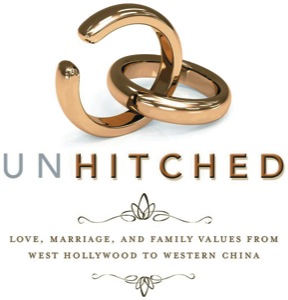
The new neighbors moved in last week, and you don’t quite know what to think.
There are three adults in the household, and two of them seem to be married but you don’t know which two. They obviously work, but at the oddest of times and there are bikes in the yard, though not on any schedule that your kids can figure out.
Yep, you got new neighbors, and while it’s really none of your business, they sure ain’t The Cleavers.
And, says author Judith Stacey, neither is anybody else anymore. In her new book Unhitched: Love, Marriage, and Family Values from West Hollywood to Western China, (NYU Press) she explains.
Not so long ago, the definition of “family” was easy: a mother, a father, and two or three kids, preferably at least one boy and one girl. But these days, says Stacey, “family” has a whole new face.
Four out of five households in the 1950s consisted of married couples, but today’s homes are filled with unmarried adults (with or without significant others) and most, without children. The divorce rate has something to do with that, as does a modern willingness to cohabitate without marriage.
Conversely, says Stacey, “love, marriage, and baby carriages are all the rage among lesbians, gay men, and transgendered people.” As one-by-one the number of states to legalize same-sex marriage grows and LGBT couples join their hetero counterparts who seek that sanction from officialdom of their vows, the definition of family is changed even further – particularly when a family unit consists of additional adults and especially when children are born or adopted into the household.
Overseas, things are no less complicated: in South Africa, heterosexual monogamous marriages are disproportionately reserved for whites, while plural marriages “belong exclusively” to black, heterosexual men.
Unhitched offers an intriguing look past the politics of marriage and so-called family values.
Stacey, a professor of social and cultural analysis and sociology at NYU – has extensively studied families for decades; this book is a wrap-up of her studies, as well as a myth-debunker.
I found the information she provides to be somewhat dry, put forth in perhaps too-academic sort of way. Yet, the book is hard to stop reading – and so is pondering the fascinating implications of the changes Stacey describes.
If you’re a people-watcher; are interested in human culture and its evolution; or have a deep interest in marriage rights, this book is a not-to-be-missed read.










